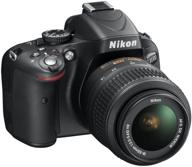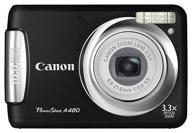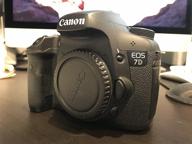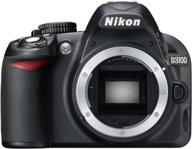
Review on 📷 Nikon D5300 24.2 MP CMOS DSLR Camera with Wi-Fi and GPS (Black) - Body Only by Brandee Diaz

D5300 for YouTube performance and comparison D3100
For those who love videos, look here - https://youtu.be/AsyukB3j4zk Read on for more details! Now I'm switching from a Nikon D3100 which I've been using for all my YouTube videos so far so I'll compare to that. I will also speak from a YouTuber's point of view. If you need a professional appraisal of your professional film or photography, you will find the best appraisal. It's amazing how much more you get with this camera considering it's as light as the D3100. Some of the additional features you get from this update are: Higher ISO range Better ISO scaling (rather than jumping ISO from 100 to 400+ with each turn of the knob. You can go from 100 to 125, for example) 24-megapixels sensor instead of 14 megapixels (if you want to take photos that big) Microphone connection Better built-in microphone (if you use one) Wi-Fi More autofocus points (39 out of 11) Live View mode Fold-out viewfinder (and this viewfinder is also slightly larger) Cleaner software interface 1080p @ 30fps or 60fps to name a few Okay, how have these updates helped my YouTube videos? Not only does the popup finder help me find focus more easily, but it also helps me see if I'm in the am in the right frame or not (like telling people to check the description or cards above) without having to stop the video and play it on camera or check it on my PC. With my D3100 I had to use the PC monitor as a viewfinder to make sure everything was sharp and centered when demonstrating a product or speaking. Note, however, that in many situations a DSLR's viewfinder will always be too small to ensure focus. Focus in the viewfinder, then record a few seconds of video, then check on your PC to make sure you're really in focus if you're constantly getting a little blurry. Of course you can always just buy a separate monitor made specifically to replace a DSLR viewfinder and show you colors and correct focus, which will usually cost a few hundred dollars or more, but if you're happy with your current DSLR and I just want a better viewfinder, I recommend going that route. The microphone port now gives me the ability to record audio directly to my camcorder with quality microphones if I choose. I have other people at home who are shooting videos on other channels and they stay very close to the camcorder while recording because they don't like using external microphones. Now they can improve the audio quality of their videos by connecting a pistol microphone. Personally, I'm a fan of external audio, which I record using the Zoom H1 and Giant Squid Lab lavaliers. Better ISO scaling and a higher ISO range help me properly light my videos without adding noise to my shot. Lighting depends not only on actual physical lighting, but also on the capabilities of the DSLR. The D5300 allows for finer ISO settings, so I can go as low as 25 ISO for a slight boost in brightness to get the right image without having to jump past 100 ISO than messing around with my aperture, exposure, etc, like you do it with the D3100. Combined with the improved sensor, this also helps when photographing outdoor products in low light or when I don't feel like setting up studio lighting for just a few good shots. 1080p @ 30fps or 60fps is great. I was limited to 23fps on my D3100, which isn't bad considering most of the movies you watch these days are shot at 24fps, but I like the way the movement is captured in my videos at 30 fps second versus 23 frames per second. In combination with the previous ISO points, my videos look much better. On another YouTube channel with my brother where we discuss local and international news, I shoot at 60fps because when talking about any story there is a lot of movement, from laughter to hand and head movements, so shoot I second at a speed of 60 frames per second. The user will actually see a jump in overall video quality as a result, as opposed to when I'm just talking on my private channel and 60 fps isn't a big deal. good option and I don't use it often. You're limited to F1/30 or higher in this mode, but now you can instantly see changes in your shot as you capture it, such as: B. when you change ISO or F-Stop without having to exit and return to Live View. in. This can save me a little or a lot of time in some situations, like shooting outdoors when the lighting changes suddenly. 39 AF points ensure the camera focuses quickly, and the D5300 is noticeably quieter when shooting, improving image quality. great photo experience. So no problem? Oh, there are several problems. The location of the microphone port could be a little better. Due to the large shutter over the port you will partially block the viewfinder if you attach something to it when it is extended. Something weird is happening with one of the lighting settings (exposure, aperture, ISO) but I don't know what's causing it, when I'm shooting a video the lighting suddenly changes very subtly from time to time and it happens when I'm shooting I'm in manual mode in a studio-lit room, so not sure how this is possible. The D5300's button mapping is very different from the D3100. The function (Fn) key (which is your ISO key by default), the "i" key and all the keys that were on the side of the viewfinder on the D3100 have a new layout, apparently due to the fact that the viewfinder jumps out high. and I'm not exactly a fan of repositioning. The ISO button is slightly higher and closer to the flash button, so I accidentally pop the flash up while trying to change ISO on the fly. I've done this before on the D3100 but it wasn't a big deal because the button wasn't that close, but on the D5300 it's actually closer which is quite annoying. In the past, different recording modes had a lever that you moved back and forth. toggle between them (continuous, frame by frame, self-timer, silent shutter). You now have an awkwardly placed button between the lens release button that's hard to reach without looking. At least you now have a remote mode, which I don't think the D3100 had at all. It's all over now. Thank you for reading and I hope it helped you a little with your purchase decision.
- Pleasing
- Older model
New products
Comments (0)
Top products in 📷 Digital Cameras

Nikon D5100 Digital SLR Camera with 18-55mm VR Lens - High Resolution 16.2MP

172 Review

Canon PowerShot A480 camera, black

108 Review

Discontinued Canon EOS 7D Digital SLR 📷 Camera Body Only with 18 MP CMOS Sensor

88 Review

Nikon D3100 DSLR Camera Body (Kit Box) - No Lens Included, International Version with No Warranty

298 Review





